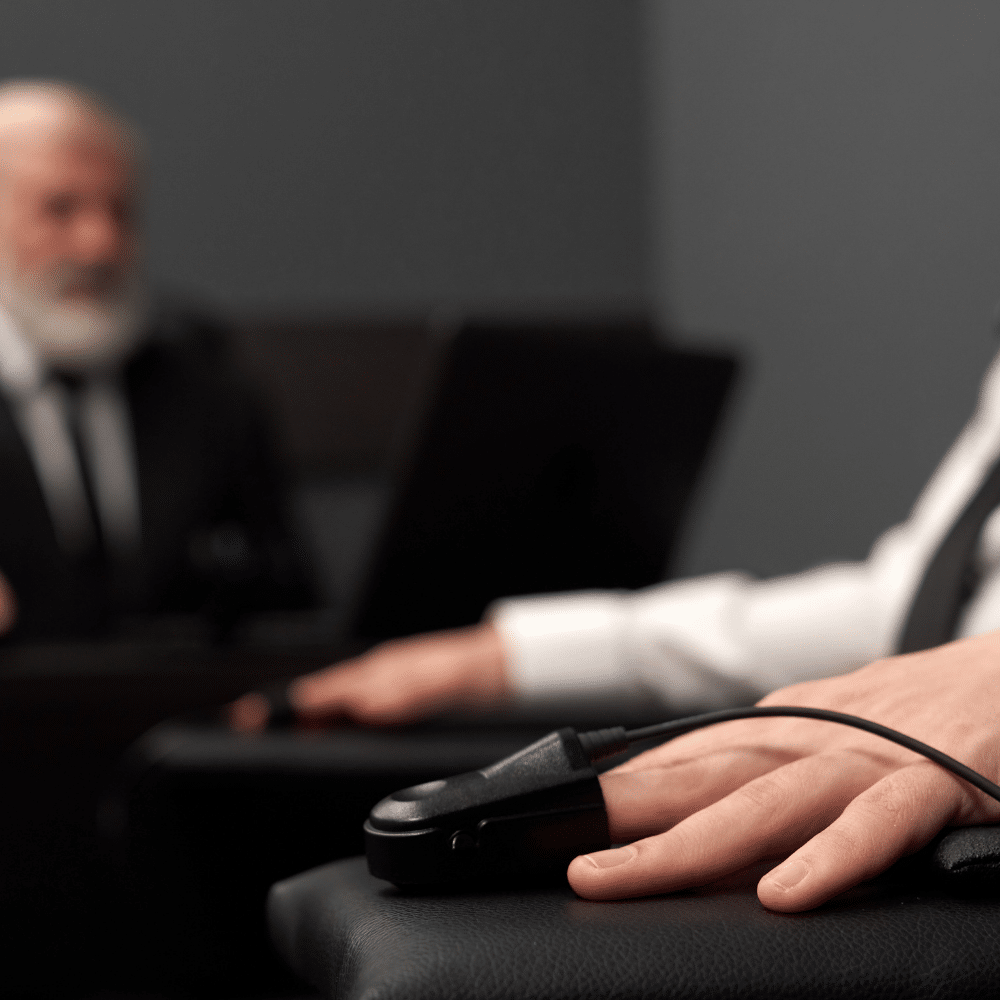Ads
Discovering the truth has never been so accessible and accurate.
In a world where honesty is often put to the test, having effective tools to detect lies has become essential.
Ads
Imagine having in your hands an app that not only promises, but also delivers accurate results by identifying those who are not being completely truthful.
This technological advancement is transforming the way we interact with and evaluate the veracity of the words of those around us.
Ads
With the rise of mobile technology, developers have gone a step further, creating a revolutionary app designed to expose liars with astonishing accuracy.
This innovative tool uses advanced algorithms and real-time data analysis to detect inconsistencies in speech, intonation, and other indicators of deception.
Its ease of use and high effectiveness make this tool an indispensable ally in both personal and professional settings.
This article will take you into the details of how this unique app works.
You'll discover how its characteristics can help you navigate complex situations, improve your interpersonal relationships, and make more informed decisions.
As we explore its advantages and limitations, you'll understand why this technological development is capturing the attention of experts and users around the world, marking a turning point in the way we understand and value honesty.
The Technology Behind Lie Detection
In a world where honesty often takes a backseat, technology has advanced significantly to help effectively identify the truth.
SEE ALSO:
- Master the accordion with our app!
- Discover your family roots with Ancestry
- Edit photos and videos like a pro
- Revealing the Identity of Your Celestial Protector
- Free Urban Connection
The new app, which has gained popularity for its ability to detect liars, uses advanced algorithms and machine learning to analyze patterns of behavior and speech.
These algorithms are designed to identify inconsistencies in tone of voice, facial expressions, and body language.
The system collects audio and video data to assess the veracity of statements made by individuals.
Artificial intelligence plays a crucial role in this process, continuously learning from each interaction to improve its accuracy.
Practical Applications of the App
The ability to reliably detect lies has a wide range of practical applications.
In the corporate world, companies can use this technology during the hiring process to assess the honesty of candidates.
This helps ensure that prospective employees are trustworthy and that their backgrounds are consistent with the information provided during interviews.
In the judicial sector, the application can be used as a complementary tool for investigators and judicial officials.
By providing an impartial assessment of the veracity of testimonies, the system can contribute to the resolution of cases and the administration of justice.
This could be especially useful in situations where there is no conclusive physical evidence.
In personal relationships, couples can turn to this technology to resolve trust disputes.
Although using such a tool in the private sphere might be controversial, it may offer a way to address genuine concerns about sincerity in a relationship.
How the Detection Algorithm Works
The core of the application lies in its detection algorithm, which is based on the detailed analysis of multiple parameters.
First, real-time audio and video data is collected while the individual speaks.
This data is processed to identify any fluctuations in tone of voice, unusual pauses, or vocal stress that could indicate insincerity.
In addition, the algorithm analyzes facial microexpressions, which research shows are difficult to consciously control and can reveal hidden emotions.
Body language is also taken into account, such as hand movements, postures, and gestures that could be indicative of deception.
The combination of this data allows the algorithm to perform a comprehensive evaluation and provide a truth score.
This score is not definitive, but provides an indication of the likelihood of a statement being true or false, helping users make informed decisions.
Ethics in Lie Detection
The use of technology to detect lies raises important ethical questions.
While the ability to identify the truth is beneficial, it can also be seen as an invasion of privacy and personal autonomy.
Critics argue that the use of such technology should be regulated to prevent abuse and ensure it is not used coercively.
It is crucial that organizations and individuals using this technology do so in an ethical and transparent manner.
This includes informing people that they are being evaluated and obtaining their prior consent.
Transparency in the application's use and results is essential to maintaining public confidence in this emerging technology.
- Informed consent: Users must be aware that they are being evaluated.
- Transparency: results must be shared in a clear and understandable manner.
- Regulation: Establishing rules to prevent misuse and protect privacy.
Challenges and Limitations of Technology
Despite its benefits, lie detection technology faces several challenges.
One of the main ones is the possibility of false positives, where the system mistakenly identifies an honest person as a liar.
This can have serious consequences, especially in legal or work environments.
Cultural variability is another significant challenge.
Facial expressions, body language, and vocal inflections can vary widely across cultures, making it difficult to create a universally accurate algorithm.
Developers must consider these differences when designing and updating the system.
Furthermore, users should be aware that technology is not foolproof and should be used as a complementary tool rather than a definitive solution.
It is important to combine the results of the application with other evaluation methods to make well-founded decisions.

Lie detection technology
The advancement of lie detection technology, as presented in this innovative application, marks a significant milestone in the search for accurate truth.
Using advanced algorithms and machine learning, this tool not only examines tone of voice, facial expressions, and body language, but also integrates social media data and background checks, providing a comprehensive and reliable assessment.
Furthermore, it is clear that its application extends beyond the personal sphere, offering substantial benefits in corporate and judicial settings, where truthfulness is crucial.
However, it is essential to address the ethical concerns associated with this technology.
Transparency, informed consent, and appropriate regulation are essential to prevent abuse and ensure responsible use.
Furthermore, despite challenges such as false positives and cultural variability, this technology should be viewed as a complementary tool rather than a definitive solution.
Ultimately, its careful and ethical implementation can revolutionize the way we approach truth, strengthening trust and promoting an environment of greater integrity and justice.





